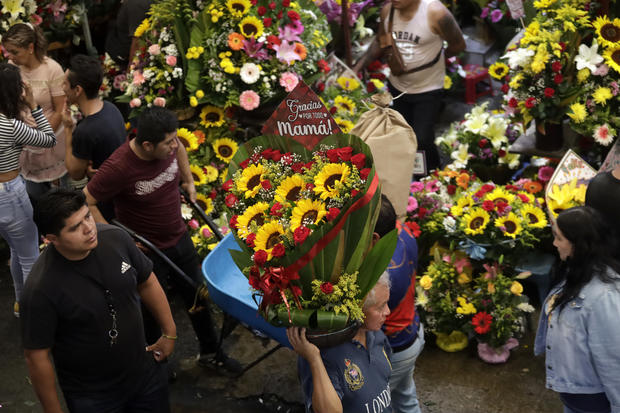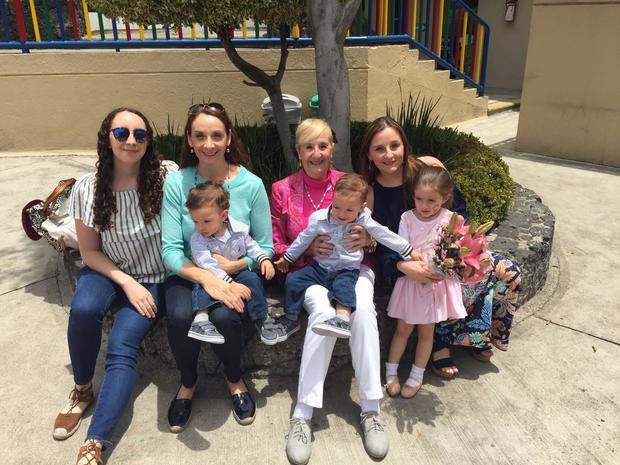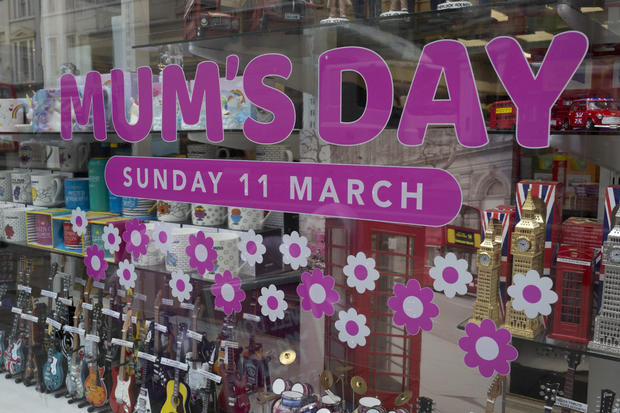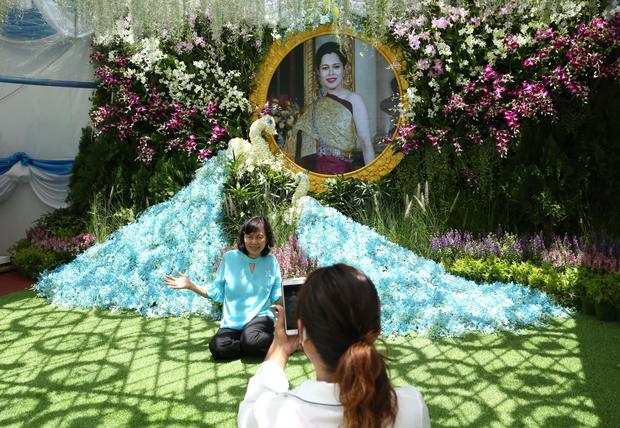
Mother’s Day traditions differ across the world — see how other families celebrate
It wouldn’t be Mother’s Day in the United States without the classic traditions Americans know best: large bouquets of roses and carnations, homemade cards, special outings, and accolades for moms near and far.
When the holiday was first started in 1907 by Anna Jarvis to honor mothers, the day’s event was at a Methodist church in West Virginia, where white carnations were reportedly distributed to those in attendance. President Woodrow Wilson in 1914 declared the second Sunday of May a national holiday.
Jarvis fiercely advocated for a day dedicated to mothers and then famously regretted how commercialized it became. In the years since, the holiday has become even more commercialized, with consumers spending a record $33.5 billion.
able to stay home and spend the day with their mom.
“The mother here is a very important figure,” Lola Barba, a mother of two who grew up in Mexico City, told CBS News. “The country stops when it’s Mother’s Day here.”
Luis Barron / Eyepix Group/Future Publishing via Getty Images
The week leading up to Mother’s Day, elementary schools organize festivals with dances, plays, and songs. Moms are invited to watch and enjoy the treats, said Barba. Families typically gather on the day for large meals with traditional menu items including mole, pozole, and enchiladas, while others opt to take their moms out to a local restaurant. But nothing beats the tradition of hiring mariachi bands or trios to serenade moms — sometimes early enough in the morning to wake them up!
Mexican Mother’s Day came about around the same time as the U.S. holiday, just over a century ago. Mexico later erected a monument to mothers called the Monumento a la Madre.
While she’s now based in Los Angeles, Barba still tends to celebrate Mother’s Day on the 10th. “I usually celebrate on the day, and sometimes I even celebrate twice!” she said.
Courtesy Lola Barba
Peru
Peruvians mark Mother’s Day, known as “Feliz Dia Mama,” by getting the whole household together, whether at a restaurant, or a relative’s house.
“In my family, we usually get together around lunchtime at someone’s house and spend the next several hours together, enjoying each other’s company and strengthening our family ties,” Laura Gonzales, 77, a mom from Lima, Peru told CBS News.
Families are also known to congregate at cemeteries to pay respect to deceased mothers, aunts, and grandmothers – particularly those who live in the provinces outside of the capital of Lima, said Gonzales. Many bring food, drinks, and flowers to lay down on the graves. Vendors have caught on and now sell flowers, balloons, and signs outside the cemeteries. What might seem like a somber tradition is actually regarded as a joyful celebration among Peruvian families.
Gonzales said that in the past, children would typically wear a red rose if their mother was alive, or a white one if they had passed. The tradition has faded over time, but red roses are still one of the most popular flower choices for mothers.
United Kingdom
In the U.K., Mother’s Day goes by a different name: “Mothering Sunday,” which honors the connection to the church in addition to mothers. During the Middle Ages, people who had moved away would come back each year on the fourth Sunday of Lent to visit their “Mother” church — typically where they were baptized. This was an opportunity to reconnect after long periods spent apart. Today, Mothering Sunday is still celebrated on the last Sunday of Lent, the date of which varies each year.
Richard Baker /In Pictures via Getty Images
The holiday’s connection to religion is less obvious nowadays, said Susan Morgan, a 65-year-old mom of three who lives in Suffolk, England. As a little girl, she recalls visiting family for afternoon tea and bringing them flowers and a homemade card.
“It felt like an important day to me, slightly religious, and about going with my mum to show respect to her mother and her mother’s mother,” Morgan told CBS News.
Thailand
In Thailand, Mother’s Day is a holiday that the entire country joins in on — it’s a public holiday and people are given the day off. Originally celebrated on April 15, the holiday was moved to August 12 in 1976 to coincide with the birthday of Queen Sirikit, a member of the Thai royal family.
Wang Guoan/China News Service via Getty Images
With double the reason to celebrate, there’s plenty of fanfare. Leading up to the 12th, buildings across the country are adorned with images of the queen, along with colorful flags, flowers, and lights. In Bangkok, the capital of Thailand, fireworks can be seen lighting up the sky during an annual ceremony for the queen.
Children offer their moms white jasmine flowers, which are in high demand in and around the holiday. “It is not just a holiday; it is the day that we appreciate mothers and motherhood and reflect how grateful we are,” said Ploy Khunisorn, who lived in Thailand for 22 years but is currently living in Boston.
Last year, the U.S. Embassy in Thailand extended warm wishes to the queen and all Thai mothers.
France
Celebrations look different depending on the family, but in France, it’s typical to offer moms small gifts and flower bouquets, like the famed Lily of the Valley.
Mother’s Day typically takes place on the last Sunday of May.
Spending quality time with loved ones is also an important part of how the French mark the day, Anne-Sophie Bellemin, a French mother of two who lives in the town of Novalaise, told CBS News
Bellemin said her husband has historically gone to le marché, the market, the morning of Mother’s Day to buy a colorful bouquet replete with roses, daisies and other flowers. “It was a tradition for the kids to give me the bouquet my husband had bought,” she said.
More
More
Source: cbsnews.com


